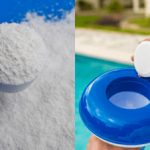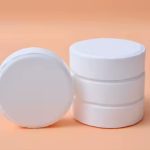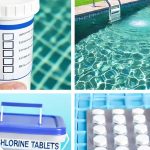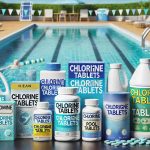Maintaining the perfect pool requires the right balance of chemicals, and chlorine tablets play a crucial role in this process. Whether you’re a new pool owner or a seasoned pro, understanding how to use chlorine tablets effectively can make your pool maintenance routine a breeze. In this blog post, we’ll dive into what the ideal chlorine levels for your pool are, how to monitor and adjust these levels with chlorine tablets, and some handy tips for using test strips and pool testing kits.
Ⅰ. What is the Ideal Chlorine Level in Pool Water?
1.Target Chlorine Levels:
The ideal chlorine level in residential pools should range between 1-3 parts per million (ppm). Maintaining this range is essential for keeping your pool water sanitized and safe. Chlorine at these levels effectively kills harmful bacteria, viruses, and algae, ensuring that the water remains clear and healthy for swimmers.
2.Factors Affecting Chlorine Levels:
Several factors can influence chlorine levels in your pool. Sunlight, for instance, can cause chlorine to dissipate more quickly. High temperatures, heavy pool usage, and the presence of organic materials like leaves and debris can also affect chlorine levels. Regular monitoring is vital to maintain the right balance and ensure continuous disinfection.
Ⅱ. How to Use Chlorine Tablets to Monitor and Adjust Chlorine Levels
1.Introduction to Chlorine Tablets:
Chlorine tablets are a popular choice for pool maintenance because they are easy to use and highly effective. These tablets are usually made from compounds like trichloroisocyanuric acid (TCCA), which dissolve slowly, providing a steady release of chlorine into the water. This slow dissolution helps maintain consistent chlorine levels over time.
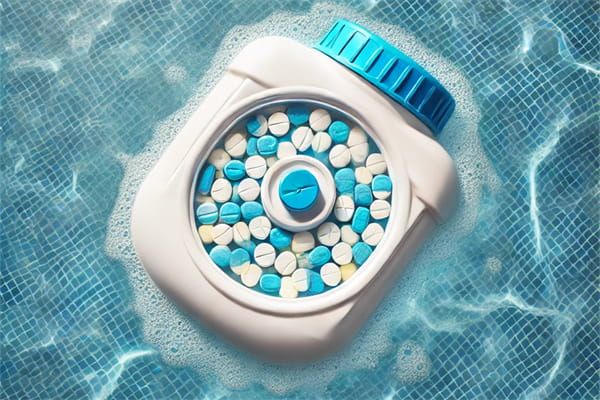
2.Step-by-Step Guide to Using Chlorine Tablets:
Adding Chlorine Tablets:
In the Skimmer: One of the simplest ways to add chlorine tablets to your pool is by placing them in the skimmer basket. As water flows through the skimmer, it dissolves the tablets, distributing chlorine evenly throughout the pool.
Using a Floating Dispenser: Another method is to use a floating dispenser. This device holds the tablets and floats on the surface of the pool, slowly releasing chlorine as it moves with the water.
Automatic Chlorinator: For those who prefer a more automated approach, an automatic chlorinator can be installed in the pool’s circulation system. This device controls the release of chlorine, ensuring consistent levels with minimal effort.
Consistent Application:
To maintain stable chlorine levels, it’s important to add chlorine tablets consistently. Check the skimmer, dispenser, or chlorinator regularly to ensure there are always tablets available to dissolve.
Calculating the Number of Tablets:
The number of chlorine tablets you need depends on the size of your pool and the current chlorine levels. Typically, one 3-inch chlorine tablet treats 5,000 gallons of water. Adjust the dosage based on the volume of your pool and test results.
Ⅲ. Tips for Using Test Strips and Pool Testing Kits
1.Choosing the Right Testing Method:
Regular testing is key to maintaining optimal chlorine levels. Two popular methods for testing pool water are test strips and pool testing kits. Each has its pros and cons:
Test Strips:
Pros: Test strips are quick and easy to use. They provide a fast indication of chlorine levels and other chemical balances.
Cons: They can be less accurate than testing kits and may require frequent retesting.
Pool Testing Kits:
Pros: Testing kits offer more precise measurements and can test for a wider range of chemical parameters.
Cons: They can be more time-consuming and require careful handling of reagents.
2.Effective Testing Techniques:
Using Test Strips:
Dip a test strip into the pool water, about 18 inches below the surface, and hold it there for a few seconds.
Remove the strip and wait for the colors to develop according to the manufacturer’s instructions.
Compare the colors on the strip to the provided chart to determine chlorine levels.
Using a Pool Testing Kit:
Collect a water sample in the test kit’s container, usually from about elbow depth.
Add the reagents as instructed and shake or mix the solution.
Compare the resulting color change to the provided chart to determine the chlorine level.
3.Frequency of Testing:
Regular testing is crucial. For most pools, testing the water at least twice a week during the swimming season is recommended. If the pool is used heavily or after heavy rains, more frequent testing might be necessary. Additionally, always test after adding any chemicals to ensure proper balance.
Conclusion
Maintaining optimal chlorine levels in your pool with chlorine tablets ensures a safe, clean, and inviting swimming environment. By understanding the ideal chlorine levels, using chlorine tablets effectively, and employing reliable testing methods, you can keep your pool water in perfect condition. Regular maintenance and monitoring are key to achieving and sustaining these optimal conditions, allowing you to enjoy your pool with peace of mind.

